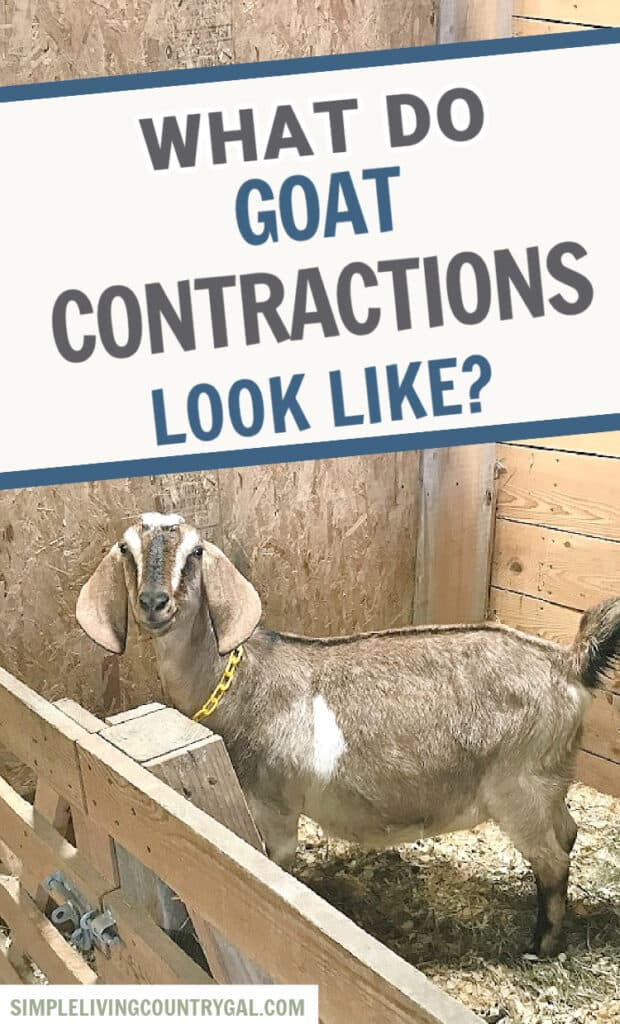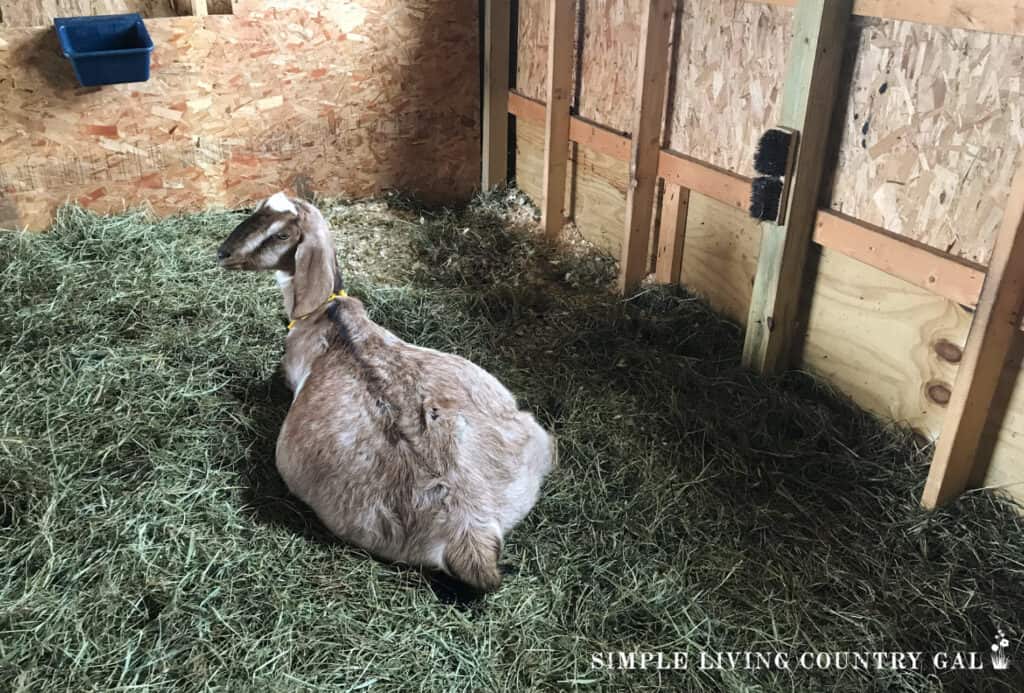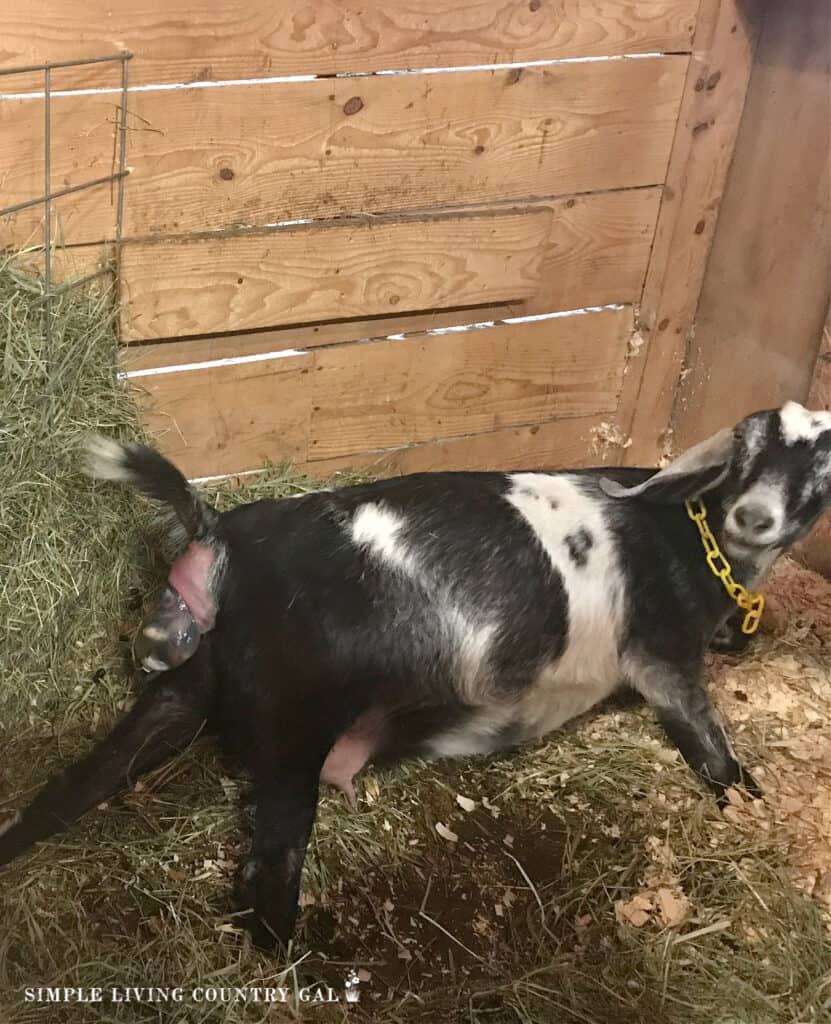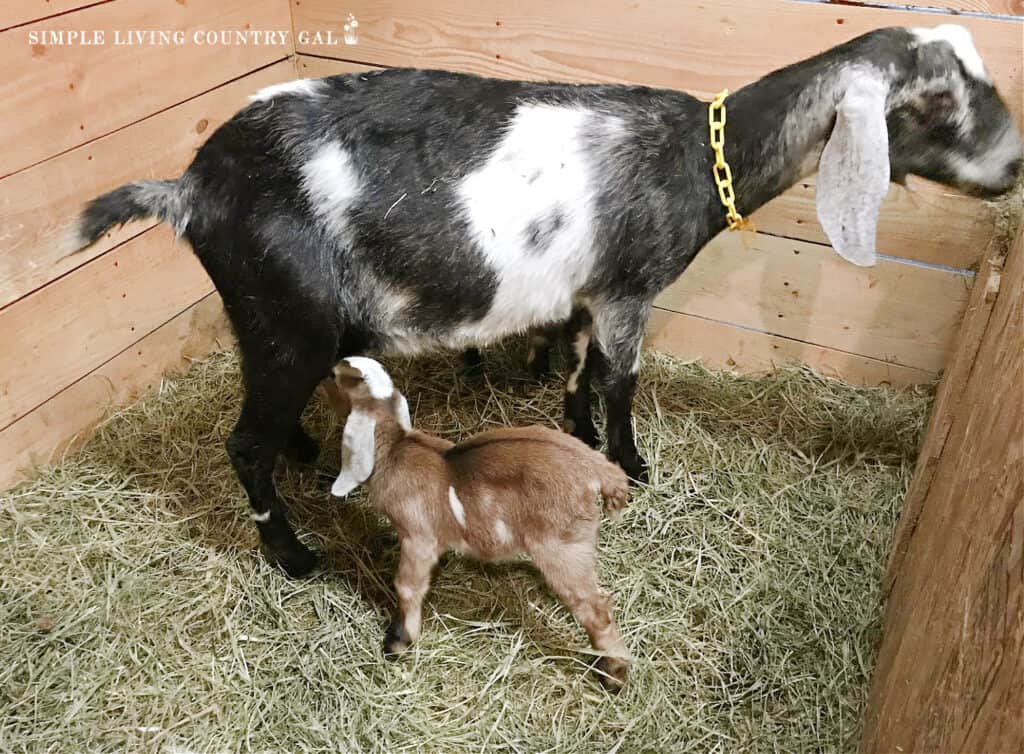What do goat contractions look like
Goat kidding is a pretty big event on a homestead, but it can also be a scary one, especially if you are new to raising dairy goats. By knowing what goat contractions look like, you can be better prepared for new sweet goat babies.
Goat Breeding and Goat Kidding is a part of raising dairy goats that is a good area to research and learn more about.

If you are a homesteader or family that raises dairy goats, then birthing is likely one of your most exciting events of the year. Spring is a fun time, especially when you have goat kids running about. But before that fun begins, your does will need to have those kids in the healthiest way.
To make sure mom and baby both remain safe during kidding, it’s helpful to understand what goat contractions look like and what verbal signs your doe might give off. We will explain the timeline that you can expect when contractions start occurring, as well as ways in which you may help your goats along the way if needed. Staying aware of these key indicators throughout her birthing process will ensure that mother and kids are kept healthy from start to finish!
What is a goat contraction, and what does it look like
A goat contraction is the strong tightening of the uterus that signals that kidding season has begun. The contraction can range from 30 seconds to a minute in length and will be visible as a hardening of the doe’s abdomen. Contraction intensity can vary depending on how close she is to giving birth, so don’t worry if you see her abdomen go back and forth between hard and soft.
How to recognize the signs of a goat in labor
The most obvious indicator that your doe is in labor will be her physical behavior. She may become restless, panting or pacing around the pen. If she lies down and stands back up multiple times, this is a sign that she’s getting ready to kid.

What are the verbal signs of a goat in labor
In addition to physical signs, you may notice that your doe is vocalizing during labor. She may bleat louder and longer than normal, or she might even grunt or cry out in pain before finally delivering her kids. It’s important to keep an eye on her during this time, as she’ll likely need a bit of extra attention and help from you until the kids have been born.
What are the physical signs of a goat in labor
As labor progresses, your doe’s cervix will begin to dilate, and her udder may become full of colostrum. She’ll also start to have a bloody discharge from her vulva as she gets closer to delivery. Once the babies begin emerging, you should be able to see their feet sticking out from behind the doe. For normal presentation, you should also see a nose close after you see the hooves, as if the goat kid is diving out of the doe.

How long do contractions last
Contractions are a key part of the labor process and can last anywhere from 30 seconds to a minute. As the doe continues to push, you should see her abdomen hardening while she’s in a contraction. Eventually, after enough contractions have taken place, you’ll begin to see a water sack or even the hooves of a goat kid.
How close to kidding is it when a goat starts to have contractions
The timing of contractions can vary greatly from goat to goat, but generally speaking, when a doe starts having noticeable contractions, she’s usually within an hour or two of kidding. After the contractions have been going on for a while, you should start to see visible signs that labor is progressing and that the kids are getting ready to be born. At this point, it’s important to be prepared for anything and stay near the doe in case she needs help.
What should you do while a goat is in labor?
The most important thing to remember when a goat is in labor is to try not to interfere too much. Your job is mainly just making sure that your doe stays calm and comfortable and that she has enough space to give birth. Just stand out of the way and keep a watchful eye out for any potential issues that might arise while the doe is in labor, including signs of distress or difficulty delivering the kids. If any problems with delivery occur, it’s best to call your veterinarian as soon as possible.

Goat kidding season can be a bit overwhelming, but it doesn’t have to be. Being able to recognize the signs of contractions in your goat will help you know when kids are close to coming so you can stay near in case you are needed. Don’t let this scare you. Remember, 90% of all goat kidding goes off just fine all on their own. Trust your doe to do her job but remain nearby just in case. The more information you have about what goat contractions look like, the better prepared you’ll be.
